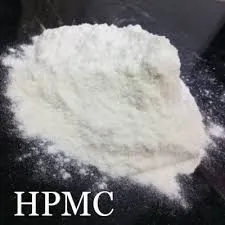
Aug . 12, 2024 22:52 Back to list
Exploring the Applications and Benefits of Hydroxypropyl Methyl Cellulose in Various Industries
Hydroxypropyl Methylcellulose (HPMC) Properties, Applications, and Benefits
Hydroxypropyl methylcellulose (HPMC) is a semi-synthetic polymer derived from cellulose. It is a non-ionic, water-soluble compound that has gained prominence in various industries, ranging from pharmaceuticals to food and construction. Its unique properties make it an invaluable ingredient, and its applications continue to expand.
Chemical Structure and Properties
HPMC is produced through the chemical modification of cellulose, which is obtained from natural plant fibers. The introduction of hydroxypropyl and methyl groups into the cellulose chain enhances its solubility and versatility. The ratio of hydroxypropyl to methyl varies, resulting in different grades of HPMC, each suited for specific applications. The viscosity of HPMC solutions can be adjusted by changing the concentration and molecular weight of the polymer, providing tailored properties for diverse uses.
One of the remarkable features of HPMC is its ability to form gels and films upon hydration. This property makes it an excellent thickening agent and stabilizer. Additionally, HPMC is odorless, tasteless, and non-toxic, which further broadens its applicability, especially in food and pharmaceutical products.
Applications in Pharmaceuticals
In the pharmaceutical realm, HPMC is widely used as a binder, thickener, and film-forming agent in the preparation of tablets, capsules, and other dosage forms. Its gel-forming ability is particularly beneficial in controlled-release formulations, allowing for a gradual release of active ingredients in the body. HPMC is also utilized in eye drops as a lubricant due to its hydrophilic nature, providing moisture to the eyes and minimizing dryness.
HPMC’s compatibility with various excipients and active pharmaceutical ingredients enhances its functionality in drug formulations. It is frequently employed in the manufacture of hydrophilic matrices for extended release formulations, providing a reliable solution for improving patient compliance by reducing dosing frequency.
hydroxypropyl methyl cellulose hpmc

Culinary Uses
In the food industry, HPMC serves multiple roles. It is used as a thickening agent, emulsifier, and stabilizer in various food products such as sauces, dressings, and baked goods. As a fat replacer, it contributes to texture and mouthfeel, enhancing the sensory experience of food without adding extra calories. Furthermore, HPMC is commonly found in gluten-free products, where it helps mimic the structure and elasticity that gluten provides in traditional baked goods.
Construction and Other Industries
The construction industry also benefits from HPMC, particularly in the formulation of adhesives, mortars, and tiles. It acts as a water-retention agent, ensuring that the mixture remains workable for an extended period, which is crucial for construction applications. This property also helps in achieving better adhesion and durability of the finished products.
Moreover, HPMC finds use in cosmetics and personal care products, where its thickening and film-forming characteristics contribute to the overall effectiveness and feel of creams, lotions, and gels.
Conclusion
Hydroxypropyl methylcellulose (HPMC) is a versatile compound with a wide range of applications across various industries. Its unique properties, such as water solubility, gel formation, and compatibility with other materials, make it a valuable ingredient in pharmaceuticals, food, construction, and cosmetics. As research and technology continue to evolve, the potential uses and benefits of HPMC are expected to expand further, solidifying its position as a crucial polymer in modern applications. Whether enhancing drug delivery, improving food texture, or contributing to construction stability, HPMC's multifaceted nature ensures it remains an essential component in many formulations.
-
Versatile Hpmc Uses in Different Industries
NewsJun.19,2025
-
Redispersible Powder's Role in Enhancing Durability of Construction Products
NewsJun.19,2025
-
Hydroxyethyl Cellulose Applications Driving Green Industrial Processes
NewsJun.19,2025
-
Exploring Different Redispersible Polymer Powder
NewsJun.19,2025
-
Choosing the Right Mortar Bonding Agent
NewsJun.19,2025
-
Applications and Significance of China Hpmc in Modern Industries
NewsJun.19,2025







